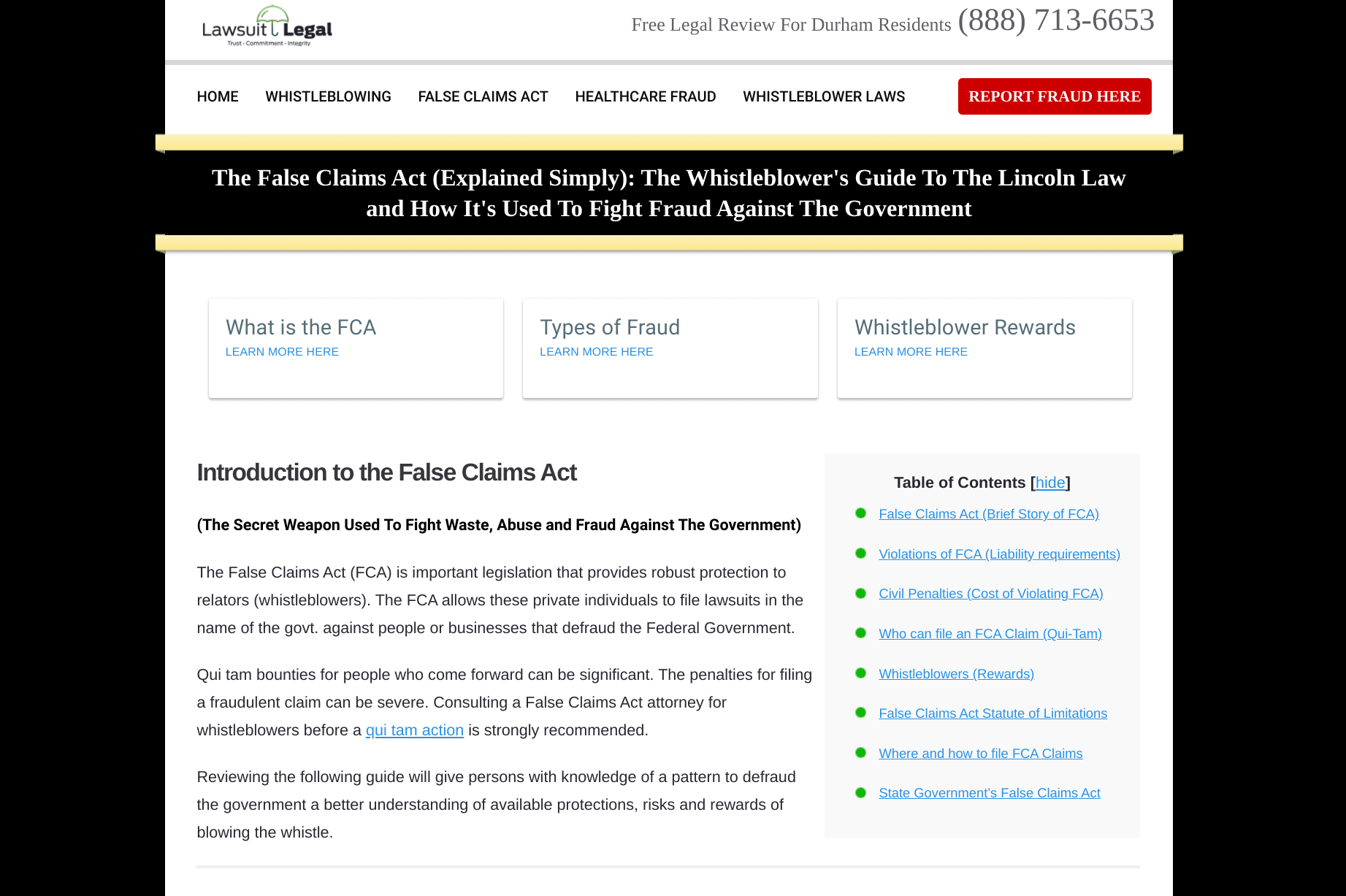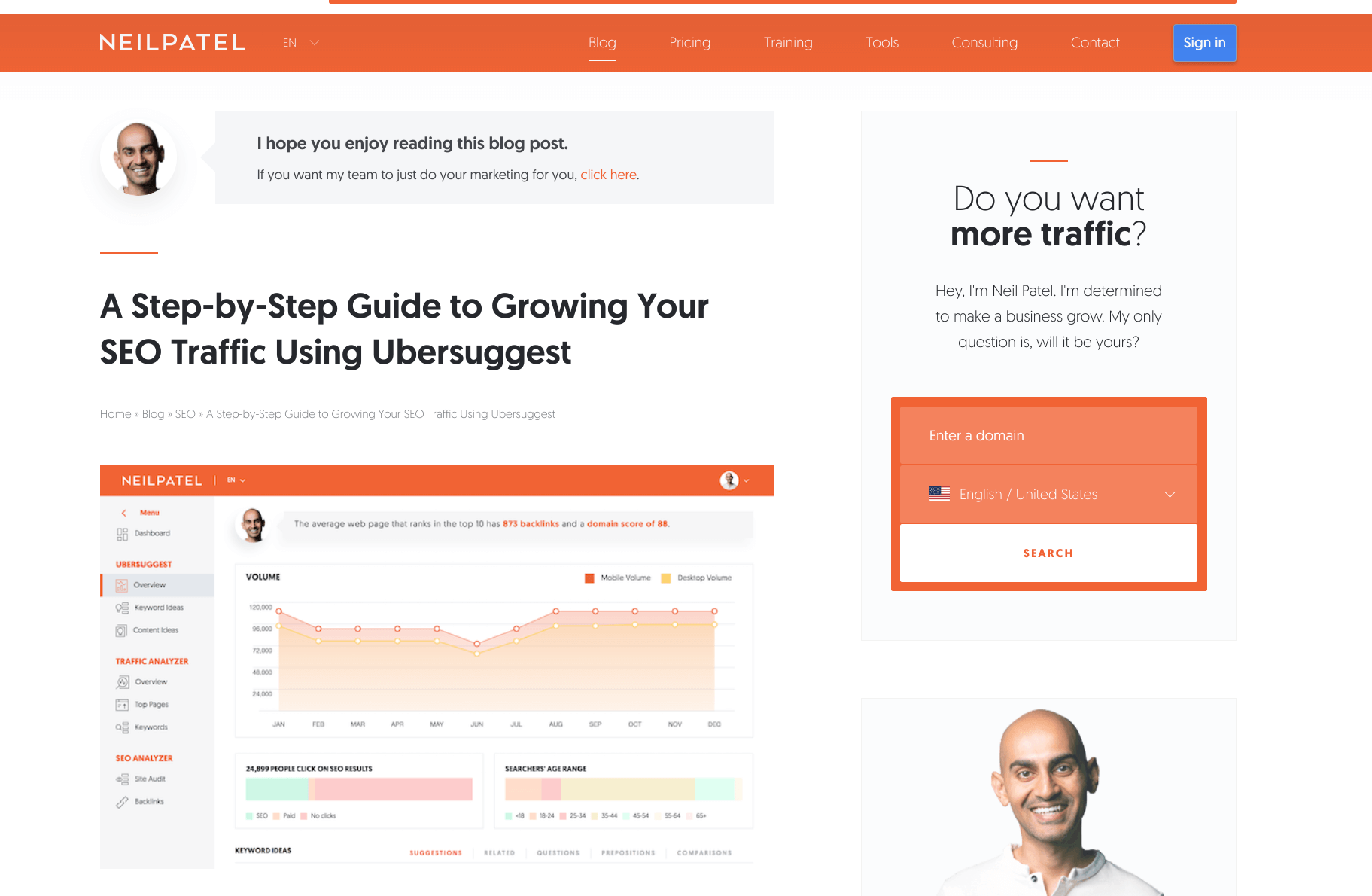It’s 2021, and content marketing is still king!
It’s an incredibly valuable tool for business promotion, search engine optimization, building backlinks, showing expertise, and earning the trust of your customers. If you don’t have a content marketing strategy or need help improving yours, you’ve come to the right place.
In this article, I’m going to do a deep dive into seven different types of content you should be creating for your website. Let’s boost your
Infographics
Infographics offer a great way to make information- or statistic-heavy content interesting. They are colorful collections of imagery, charts, and text that give an easily digestible overview of certain topics.
There are a lot of benefits to creating infographics for your own content. They’ll work well on both your website and social media profiles, so they can be repurposed. Plus, they’re eye-catching, easy to understand, and — perhaps most importantly — they’re easy to share.
If you create high-quality infographics, other site owners will want to incorporate them into their content and share them with their own readerships. When they do, they should provide credit with a link back to your website, which will help to improve your backlink profile. This should then send more people your way and will improve your search engine rankings.
Take a look at this example from SEMRush.

Think about how you could start using infographics in your own content. For instance, if you’re working on an article that includes a lot of facts and figures, consider whether it would be more engaging in a visual form. Chances are, this will make it more versatile, more shareable, and more interesting for your readers.
Ultimate Guides
You probably consider yourself to be an expert in your field, so it’s time to share your knowledge with the world. Ultimate guides are ideal for this, because they allow you to provide all of the information someone might need about a specific topic.
These kinds of guides can also be great for boosting your
If you create a helpful guide people want to share and link back to, Google will take each link as a vote of confidence and start to see you as a trustworthy source of information. This will help to improve your search engine rankings.
Let’s take a look at some examples of ultimate guides you can take inspiration from.

Tweak Your Biz has its own ultimate guide to digital marketing, which covers all of the basics someone might be looking for. It’s great for attracting the site’s ideal audience — namely small business owners — and also helps to position the site as an authority in its field.

Similarly, Prospero has an in-depth guide on how to write a business proposal letter. This is something that the company specializes in, so it’s an ultimate guide that’s very relevant to the site. It particularly covers when to use planning, research, formatting, and editing tools.
If someone is interested in a guide to writing a business proposal letter, they might also be interested in Prospero’s services, so this is a great tool for attracting the right people to the company’s website.

Lawsuit Legal has an excellent example, too. The company is a personal injury law firm, so they’ve created a comprehensive guide to the False Claims Act.
This covers everything a potential client might want to know about this area of law, from the types of violations there are, to the fines someone could receive if they’re found to be in breach of the Act. Again, this is the perfect type of content for showing the company’s expertise and positioning them as an authority in their field. Plus, it will help to send the right people their way.

Finally, HubSpot has an ultimate guide to SEO for 2021. This piece of content targets so many different keywords and phrases, while allowing the company to show off their expertise. It provides readers with a basic understanding of
When coming up with ideas for your own ultimate guides, think about what your company does best, and what your customers come to you for over your competitors. Or, is there a topic or question that repeatedly comes up in your customer service inquiries? These are all great ways to come up with ideas for ultimate guides.
Video Content
Video marketing is becoming more and more popular, and for good reason. According to Wyzowl, 86% of businesses use video as a marketing tool, and internet users spend about 18 hours a week watching videos. By creating tutorials, behind-the-scenes videos, vlogs, or interviews, you can tap into this market.
If you aren’t sure where to start, let’s take a look at some companies that are already using video content well.

For instance, Looka is an online logo and branding specialist, which offers a graphic design service for their clients. And, on their logo maker page, they have a video tutorial that explains how to design a logo in under five minutes.
Someone who’s looking for advice on this topic might be interested in Looka’s services, so this is a great way to direct the right people towards the company’s site. Plus, the video format allows a lot of information to be imparted in a quick and engaging way, which is sure to grab their audience’s attention.
This video could also be shared on various platforms, from the company’s website to their Instagram page, which is a bonus.

Dollar Shave Club is another business that does video marketing well. They have a hilarious promotional video, which simultaneously shows why their blades are so great while giving the brand some real personality. Because it’s so funny, this super shareable example went viral, boosting the company’s brand awareness and helping to build its backlink profile along the way.

Finally, let’s take a look at HubSpot’s guide to creating a video tutorial. This straightforward but informative video does a great job of attracting the company’s ideal audience by targeting some of the keywords they’re typing into search engines. Plus, because the video is full of stats and helpful advice, it’s sure to build trust with the business’ target customers.
There are lots of different strategies you can use to come up with video ideas. For one, you could repurpose content that you’ve already published on your blog or in your website’s knowledge hub. Alternatively, you could create a video where you answer some of the questions your customer service team often gets.
Video content is generally great for covering more complicated topics in an easy-to-understand and engaging way, so it can be very powerful. Make sure you’re taking advantage of it.
Behind-the-Scenes Content
People like to buy things from brands they know and trust. By publishing behind-the-scenes content on your website and social media, you can build a relationship with your customers and encourage brand loyalty. There are lots of different ways to do this!

For example, consider how the makers of BarkBox have added behind-the-scenes content to their blog. In an article about the team’s first pets, they show pictures and tell stories about the dogs they grew up with. This shows that the team is made up of lifelong dog-lovers and that they want to make you and your pup happy as well!

Or take a look at how Powered By Search created an article that explains the thinking behind a business decision they made. The team produced a blog post all about why they chose to be a B2B SaaS marketing agency, which outlines the thought process they went through when they decided to change their strategy. This can give their target customers a better understanding of how their company works, and also build trust while showing the business’ expertise.

Introducing your team can also be a simple but effective way of showing people behind the scenes. Just make sure you get creative to help your business stand out. For example, Cloud Horizon, a digital agency that specializes in web and mobile apps, has a unique approach. Their About Us page introduces their employees, but also provides baby pictures and a description of what each member wanted to be when they grew up.
This helps to humanize the team and will make potential customers feel closer to the company before they even work with them.
There are lots of ways you can show your customers behind the scenes of your business to gain their trust and loyalty. You could produce Q&As, conduct interviews with your staff, live stream your working days, or get your customers to vote on big decisions you’re making as a company.
The more involved people feel in your business, the more likely they’ll be to spend money with you.
Local Content (if Your Business Serves a Specific Area)
If your company has a physical location or a lot of customers in one area, you could benefit from local SEO and content. When someone nearby searches for your products or services, you’ll want your business to pop up in the search engine results. And, if you’ve been creating local content to ensure both search engines and prospective customers know where you’re based, you’ll increase the chances of that.

Take a look at how Hasbrook & Hasbrook, a personal injury law firm based out of Oklahoma City, uses local content. They don’t need to rank highly on the SERPs for personal injury lawyers country-wide — they just need to do well in their area. One of the ways in which they ensure this is by publishing a lot of Oklahoma-centric content on their blog.
They write about law changes that affect the city, cover local news relevant to their sector, and generally focus on providing their community with advice that could help them in a legal situation.
Because all of their website content has an Oklahoma City angle, it’s incredibly clear to both internet users and search engines where the business is based. So, when someone conducts a relevant local search, they’ll be far more likely to pop up on in the results.
You can still create local content if your business is based in multiple locations, too.

For example, Bay Property Management Group serves a lot of different areas, so they’ve put a lot of work into creating optimized location pages for each of them.
Their Northern Virginia page, for instance, targets relevant local keywords and provides plenty of contexts that shows the company is operating in the area. This strategy is implemented for each location.
Right off the bat, you can see that they get the location in the heading of each page — this helps Google to work out that the company has a base here. Additionally, they provide unique images, service specifications, and copy for all of their location pages, so they’re specifically tailored to the areas they’re targeting.
If you have multiple locations and want to make a webpage for each of them, these shouldn’t be carbon copies with a few details changed — they should be truly unique.
If your business serves a specific area, consider how you can start creating local content. Think about what’s relevant to your business, your area, and your customers. You can also carry out some research to see what kinds of local keywords you could be targeting.
How-To Guides
How-to guides offer a great way to demonstrate your expertise and stand out as a brand. They allow you to target relevant keywords, address your customers’ pain points, earn the trust of your audience, and position your business as an authority in its field.
It is vital that you ensure your tutorials are incredibly relevant to your niche, though, so let’s take inspiration from some companies that are already getting this right.

For example, Continental Message Solution is a company that specializes in helping businesses in lots of different industries to set up out-of-hours answering services for their phone lines. So, they’ve created a how-to guide all about setting up an answering service for a medical practice. This will attract a very specific segment of their ideal audience, allows the company to target relevant keywords people are searching for, and also gives the business a chance to show that they’re a knowledgeable authority in this area.

My Canada Payday is a loan provider, and their target audience is people who want to be smarter with their money. So, the company has created a how-to guide that explains how to save money during holiday travel.
Money-saving advice is likely to attract the company’s ideal audience, which means this is a great guide for sending the right people to this site. Plus, it will build trust with prospective customers so, if they are ever in the position where they need to borrow money, they’ll be far more likely to enlist My Canada Payday’s help.

Alternatively, Neil Patel, a content marketing professional, and blogger, has a how-to guide on growing your SEO traffic. It’s a very comprehensive guide, which walks you through everything from how to fix
It targets a lot of keywords business owners and marketers will be searching, helps to position Patel as an expert in his field, and will help to build trust with his target customers. If someone gets great results from following this guide, they’ll be far more likely to come back for more advice, or may even pay for his consulting services.
If you decide to create a how-to guide for your customers, consider what complicated subjects in your field customers might have questions about. Perhaps there is a good strategy or trick related to your business that you think more people should know about, or maybe your customer service team gets a lot of questions on how to do something. These are great places to get started with how-to guides!
Buying Guides or Comparison Pieces
Buying guides and comparison pieces — like Tweak Your Biz’s guide to different streaming services — compare two or more products. They help customers to make the best purchasing decisions, which can lead to better reviews, stronger trust in your brand, and improved customer satisfaction.
But what should a buying guide or comparison piece look like?

InVPN is a site that specializes in helping people to find the best online service to suit their needs. For instance, their guide to VPNs vs proxy servers outlines the pros and cons of each option, so readers can make an informed decision about what’s going to work best for them.
Not only does it offer an in-depth write-up of what readers need to know, but it also provides an easy to decipher table, which covers all of the most important points at a glance.

Another excellent example is SocialPilot’s round-up of the best Facebook publishing tools. The company offers its own social media scheduling platform, so this content is very relevant to its target audience. Plus, it gives the business a chance to show how its own tools measure up against others on the market, without giving a hard sell.
While they outline the benefits of using their own platform, they also give a fair representation of what else is available. This will build trust with prospective customers and their transparency might even lead to more people paying for SocialPilot’s services.

Finally, EmailToolTester is a website that’s dedicated to helping businesses find the best newsletter service to suit their needs. As part of this, they’ve created a guide comparing MailChimp and Constant Contact, which are two of the biggest email marketing platforms out there.
It’s a very comprehensive guide, which will give readers all of the information they could possibly be looking for. Plus, someone who comes across this content is probably in the process of choosing a new provider, so it’s likely they’ll be interested in some of the other guides on the site.
Buying guides often compare two similar, competing products. If you sell two similar products that customers often debate between, this type of content could help you make more sales and ensure your customers are happy with their purchases.
Don’t feel like you have to pick a side — sometimes both products are excellent, but are just better suited to different people. Outline the pros and cons of each product and give reasons that someone might be drawn to each, like price, usability, and specifications.
Summary
Every business needs to be creating relevant and high-quality content. It’s the key to earning backlinks, boosting your
By publishing infographics, videos, behind-the-scenes content, guides, and tutorials on your website, you can do all of that and more. Take these tips on board and you’ll be well on your way to improving your brand awareness and securing more leads.
Author Bio
Adam Steele is COO and co-founder of Loganix, which is an
Working at home with laptop woman -DepositPhotos


